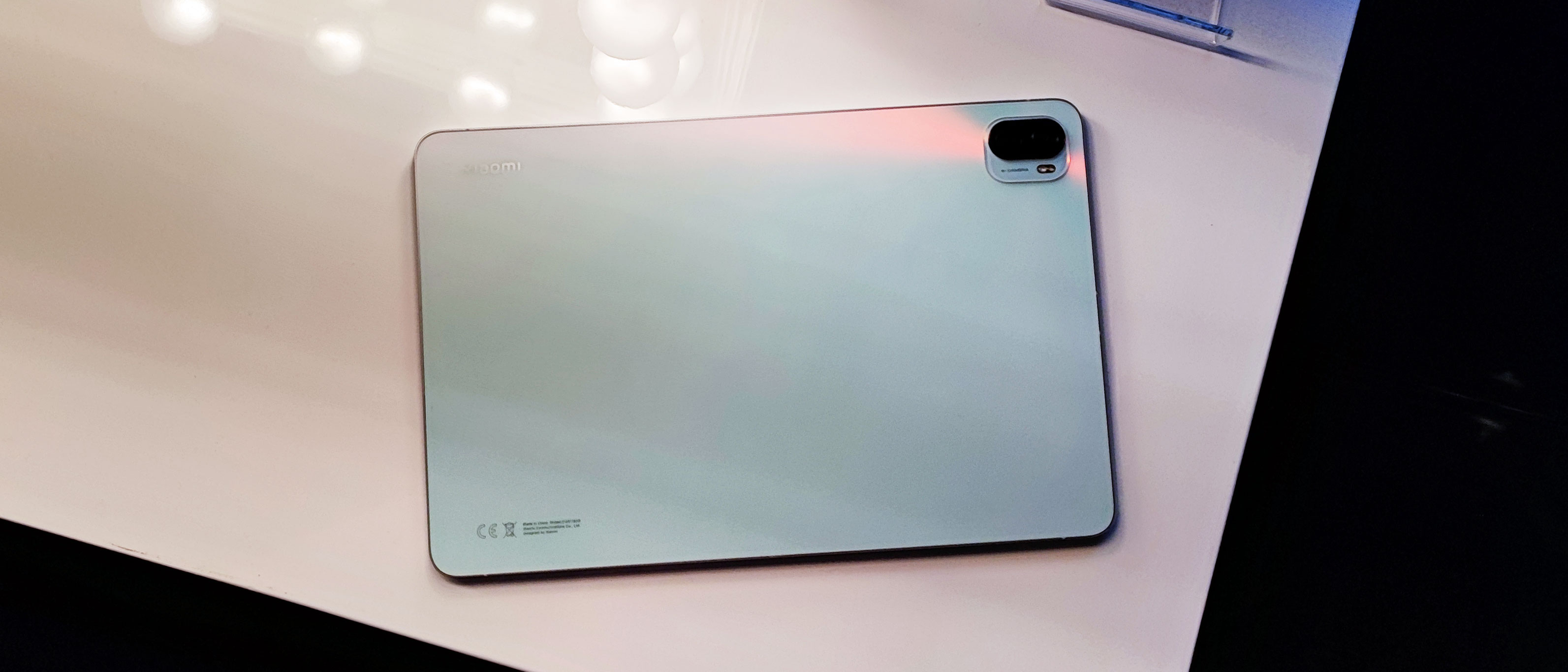TechRadar Verdict
The Xiaomi Pad 5 is a fantastic all-rounder Android tablet with a good-looking screen, lots of processing power and well-optimized software. In fact, it’s the best rival to the entry-level iPad we’ve seen so far, especially at a similar price. Our few problems with the tablet are issues that most slates face, like the lack of a 3.5mm headphone jack or the fact that arguably necessary peripherals will cause you to spend more money, but that just shows how well-rounded this slate is.
Pros
- +
Xiaomi’s software works great on large display
- +
The screen looks fantastic
- +
Impressive battery life
Cons
- -
Selfie camera has an awkward placement
- -
No headphone jack
- -
Comes with no peripherals
Why you can trust TechRadar
Two-minute review
If 2020 was the year of foldable phones, 2021 is the year of the Android tablet, with over a year of home working and learning prompting a resurgence in demand for the previously-struggling tech form factor. The Xiaomi Pad 5 marks the Chinese tech giant reviving its slate line, which last saw an installment in 2018, though this is actually the first Xiaomi tablet to get a global launch.
We’re glad the Xiaomi Pad 5 is getting sold in loads of countries too, because this is a superbly well-rounded tablet that marks the best Android rival to Apple’s popular entry-level iPad we’ve seen so far.
Not only does the Pad 5 have a price that’s similar to the iPad’s, but it has a better-looking display, almost as much processing power, and a long-lasting battery, making it great as a productivity slate or for entertainment fans, handling gaming and streaming well.
The key feature here, that makes the Xiaomi tablet fantastic for productivity, is in the software - Apple’s iPadOS is generally considered a superior tablet operating system to stock Android found on lots of slates, but Xiaomi has clearly been taking notes. MIUI for Pad, the Android fork which the company uses for the Xiaomi Pad 5, has a few key features that make it adaptable as a portable work station, like a control center that’s separate from the notification list, and lots of stylus shortcuts.
Well, you can make the most of the stylus tools and keyboard folio benefits if you buy them separately. Like Apple, Xiaomi is selling these peripherals separately, not throwing them in like Samsung does with its S Pen stylus, which means if you want to make the most of the tablet - and you probably will, if you’re hoping to use it for productivity especially - you’ll have to spend a little extra dough.
We tested the Xiaomi Pad 5 without the keyboard or stylus, using the slate ‘as nature intended’ so to speak, or how you’d find it straight out of the box. We’ve generally found that optional accessories only improve the tablet experience though, so would recommend checking out the extras.
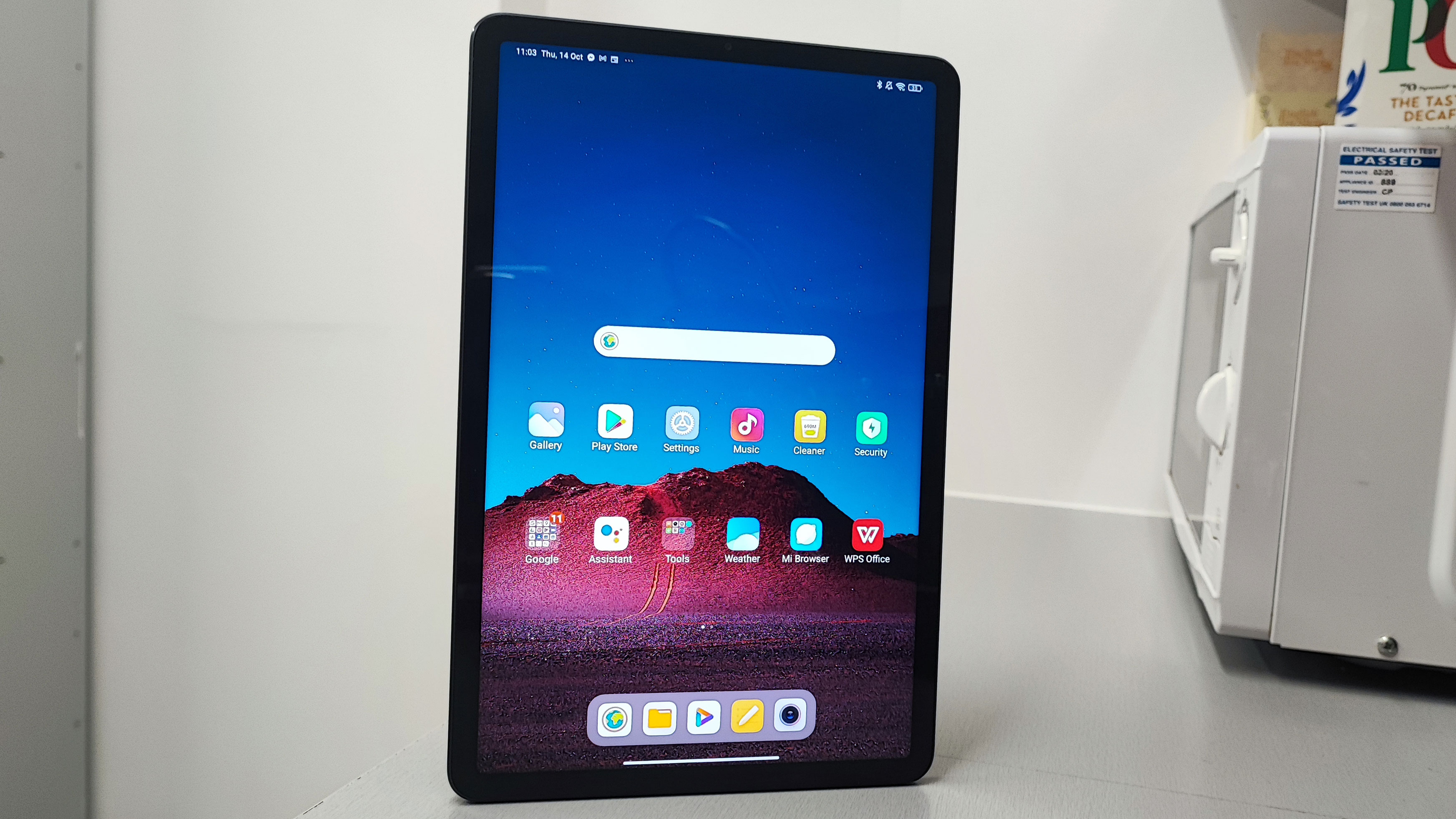
If ‘you have to buy extras instead of getting them for free’ doesn’t exactly sound like a scathing criticism of the tablet, you’ll find the two other cons listed above - the lack of a 3.5mm headphone jack, and the fact the selfie camera is on the screen’s short edge - equally head-scratching. However the truth is, there’s very little to dislike about the slate, as it’s a great-value device, so writing the ‘cons’ list was a rather hard task.
People locked to the Apple ecosystem likely won’t consider buying the Xiaomi Pad 5 (and that kind of tech fan probably hasn’t read this far into the review) but if you’d consider an Android tablet, whether you’re a working professional, a student or someone who wants a capable entertainment machine, this is a great choice.
Xiaomi Pad 5 price and availability
The Xiaomi Pad 5 was released on September 25 in the UK - the company doesn’t launch its products in the US, so don’t expect to pick it up there. But while the thing currently isn’t on sale in Australia either, Xiaomi products often do launch there, so a release could come further down the line.
The tablet costs £369 (roughly $500, AU$690), which gets you 6GB of RAM and 128GB of storage - some other regions have a version with 256GB of storage on sale too, but that’s not available in the UK.
At that price, the tablet is a close rival for the iPad 10.2 (2021) - the price for that starts at $329 / £319 / AU$499, but it’s for 64GB of storage, and there’s no 128GB version, as storage jumps up to 256GB for more money.
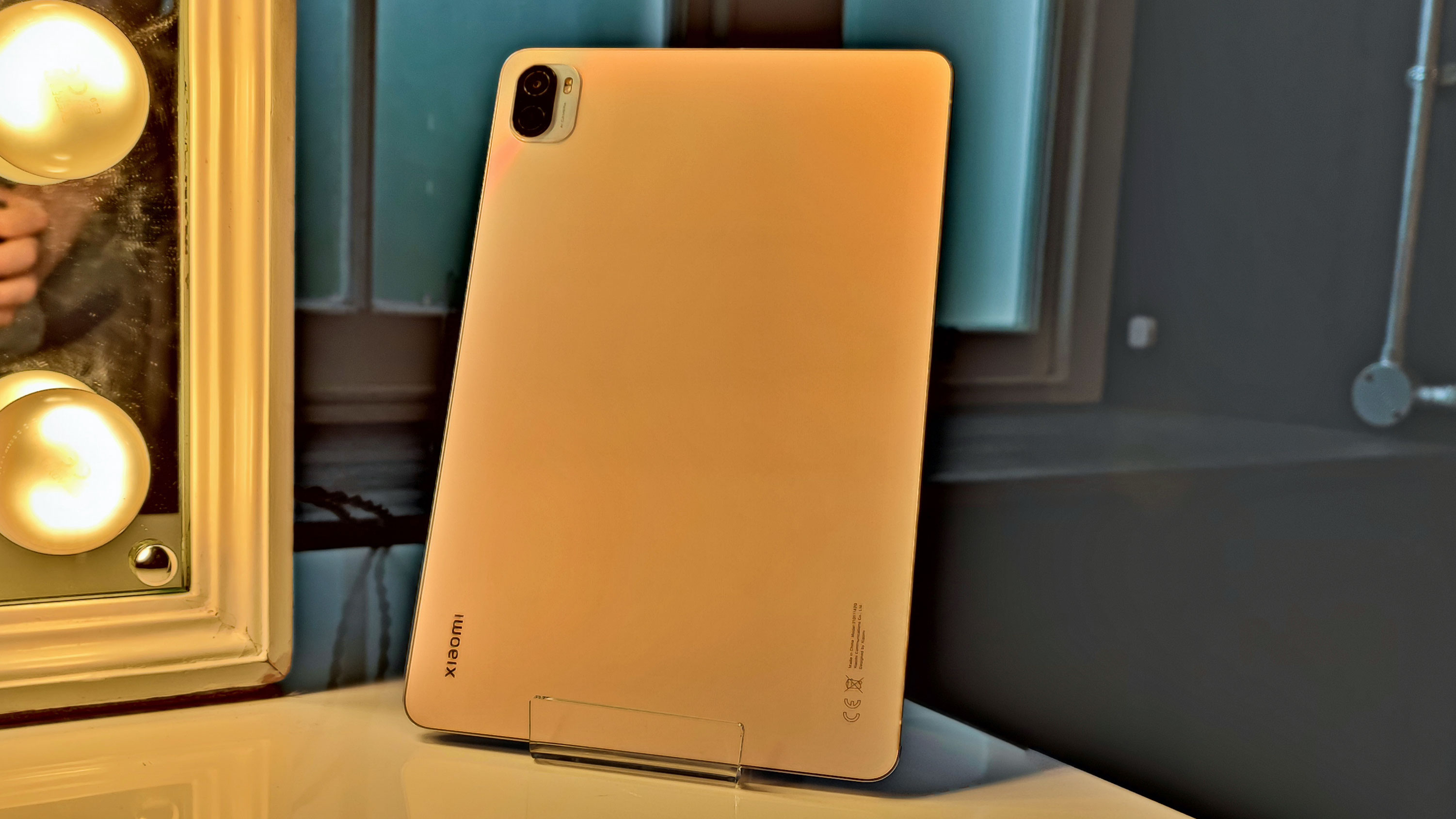
Design
If we were to compare the Xiaomi Pad 5’s appearance to that of one of Apple’s roster, it’d be the iPad Air 4 - it’s a device that’s thin, has a narrow bezel and boasts a minimalist design.
The slate has a thickness of just 6.9mm and dimensions of 254.7 x 166.3mm - weighing 511g it’s certainly not the lightest tablet we’ve seen, and is in fact one of the heaviest tablets we’ve tested relative to its display size, but the difference is a matter of grams.
Round the edges of the slate, you’ll find a power button on the top edge and volume rocker on the right edge (when you’re holding the slate in portrait orientation). The front-facing camera is above the screen when holding the device in this orientation - that does mean that when you’ve got the slate landscape, and are on a video call, when looking at the display you appear to be looking far from the camera, which isn’t ideal. Some tablets have the front-facing camera on the long edge, which is better for video calling.
There’s a USB-C port on the tablet but no 3.5mm headphone jack, so if you like wired audio, you’ll need to get an adaptor.
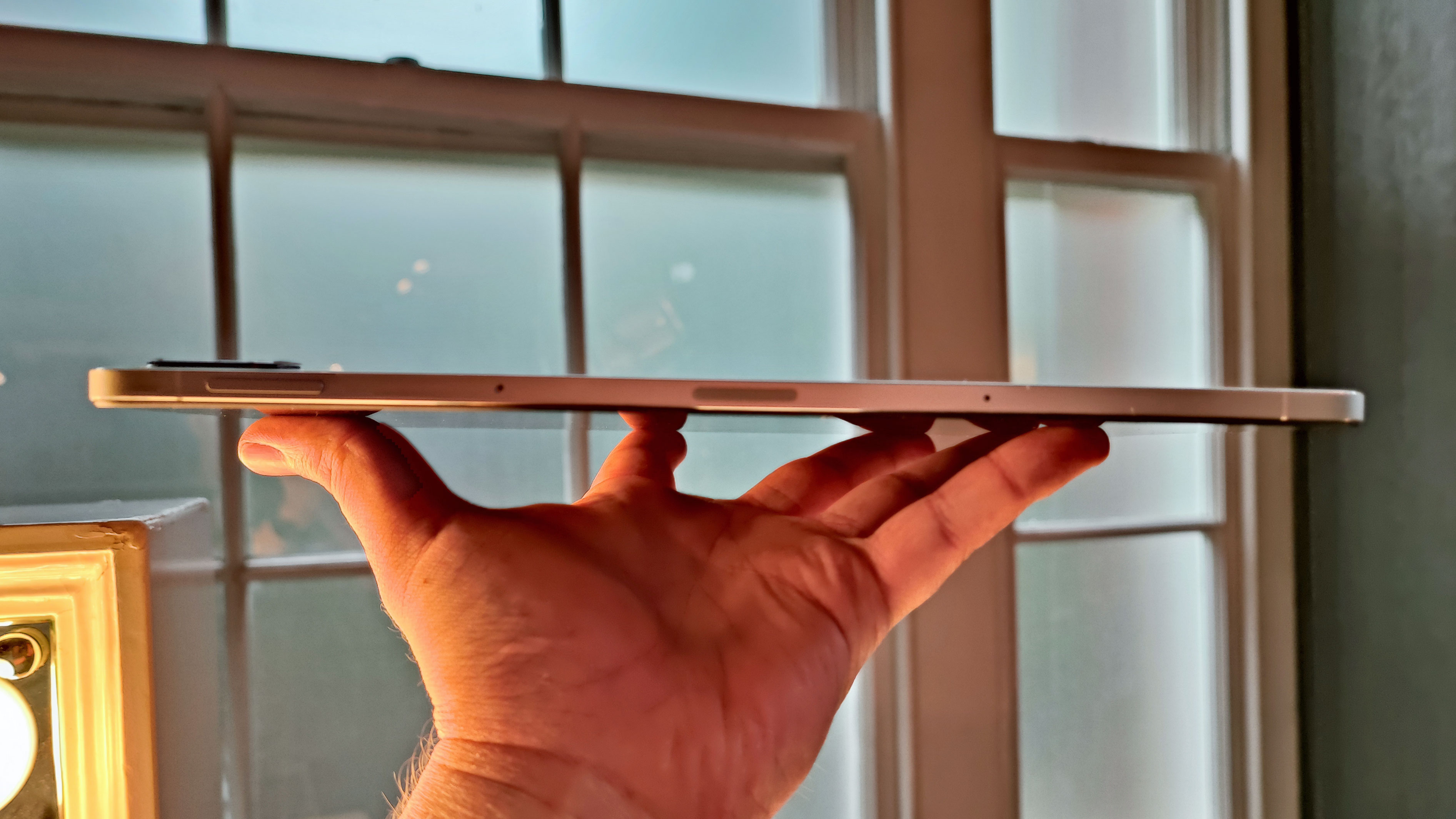
The back of the tablet is made of plastic, and it feels sturdy - we didn’t exactly ‘rough up’ the slate, but it felt durable enough - you’re likely to be snuggling it up in a case or keyboard folio though. You can get gray, white or green versions of the Xiaomi Pad 5.
The back of the tablet has a slight camera bump, which seems inspired by those on the Xiaomi Mi 11 and Mi 11 Lite in terms of its oval design. It doesn’t stick out too far, so we could easily put the slate face-up on a table without it wobbling too much.
This is the kind of tablet you can definitely use two-handed or prop up in a stand or case, but unlike your iPad mini, it’s not ideal for holding in one hand and navigating with the other, due to its size.
Display
One of the key specs of the Xiaomi Pad 5 is its 11-inch screen, which boasts a 1600 x 2560 resolution, 120Hz refresh rate and the ability to display over a billion colors (there are that many?!).
The display looks great, with bold colors and good contrast, and the high resolution certainly helps make streaming from various services, or playing games, look crisp. We watched a few movies and played several games and were impressed with what we saw.
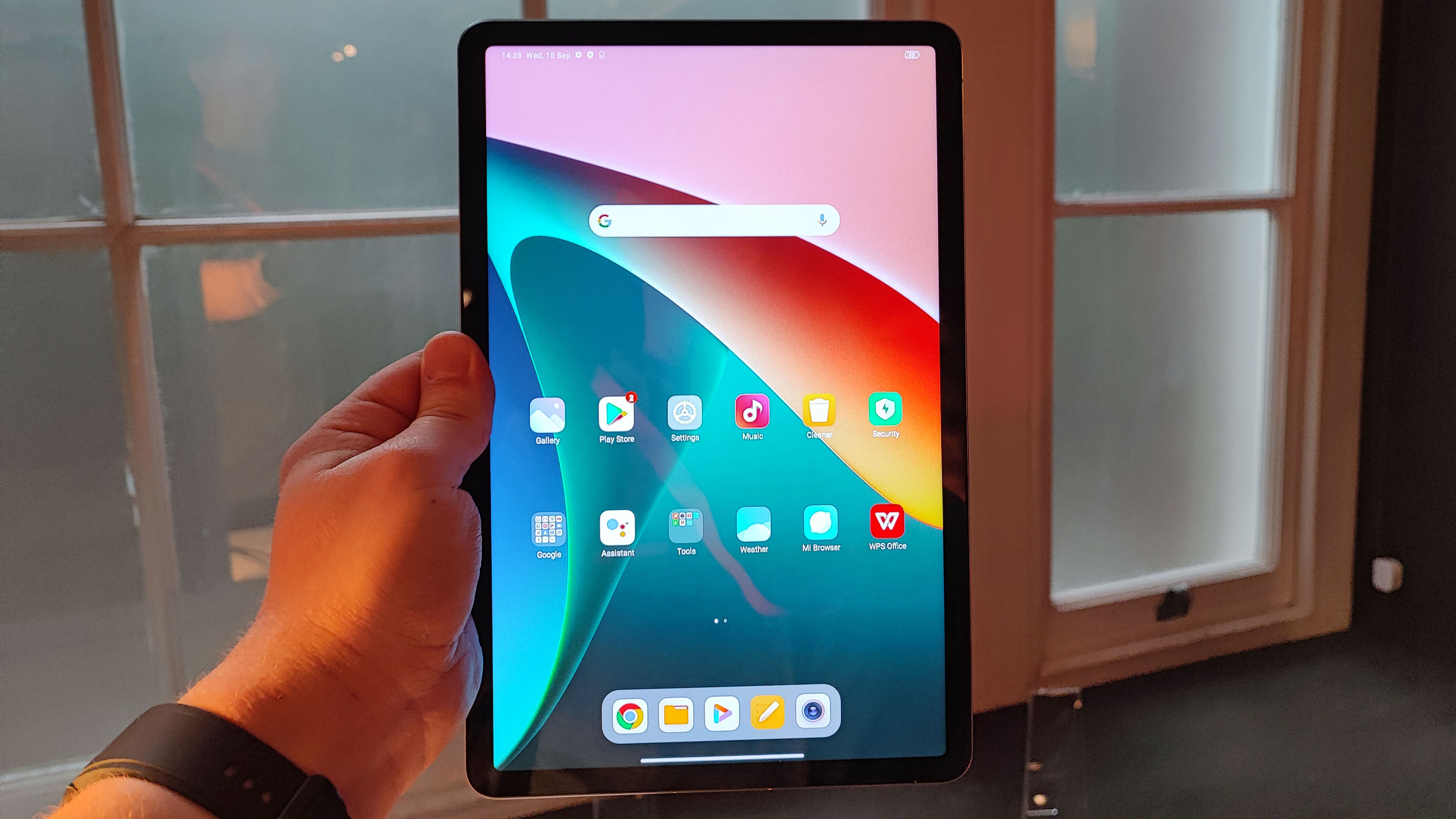
The screen aspect ratio of 1.6:1 means the slate is suited for work, as you can split-screen two different documents while ensuring both get a roughly A4 shaped slice of display.
As in Xiaomi’s phones, and lots of other tablets for that matter, there is a range of modes for changing how the screen looks - you can adjust the color temperature, blue light and ambient light. Some of these can be used to simply make the screen look more appealing, but others are useful for people with sight problems to increase ease of viewing.
Specs, performance and camera
The Xiaomi Pad 5 uses the Snapdragon 860 chipset - that’s not quite as powerful as the M1 in the iPad Pro (2021) range or the Snapdragon 865 Plus in the Samsung Galaxy Tab S7 series, but it still provides lots of processing power, and beats out many other tablets.
We put the tablet through the Geekbench 5 benchmark test and it returned a multi-core score of 2631 - that’s a high, but not top-end score, with the best phones and tablets reaching 4,000. That score puts it just a touch weaker than the Galaxy Tab S7 Plus which got 2,846, but a difference of 200 points won’t be noticeable in day-to-day use by most users.
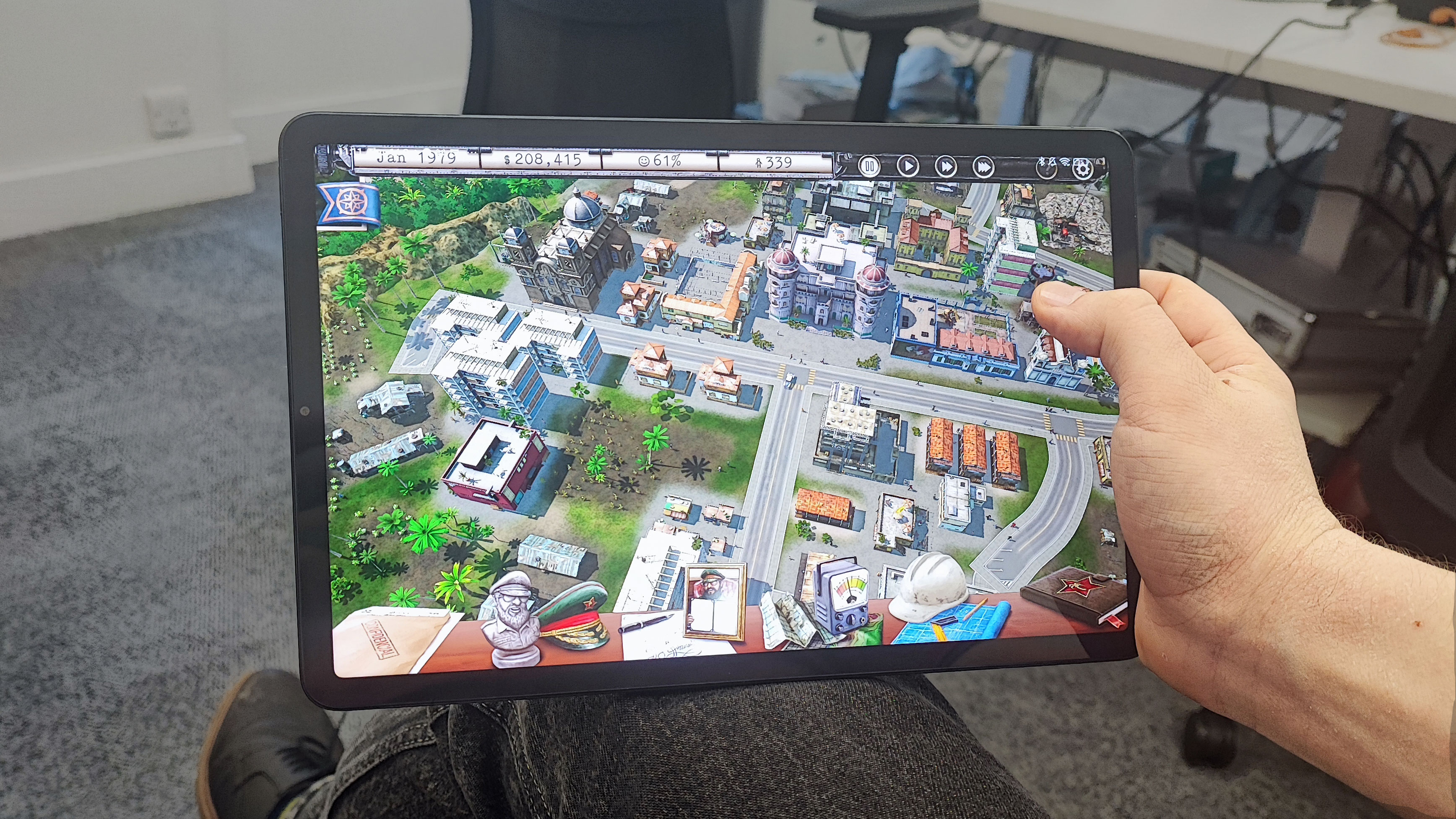
The chipset is joined by 6GB of RAM, as well as 128GB or 256GB of storage depending on where you live. If you get the choice, we’d recommend the 256GB version for students or business users, as it ensures you can download lots of games, movies or songs and still have space for all your work and files.
Unlike some tablets on the market, Xiaomi doesn’t offer an LTE model of the Xiaomi Pad 5 - you’ll have to use this while it’s connected to Wi-Fi or a hotspot.
We used the Pad 5 to test out several mid-range and top-end games, like Tropico, Northgard and Call of Duty: Mobile, and found they ran well. We could bump up the graphical settings to max in games that had them, and rarely found stutters or lag that affected the gameplay at all. In short, the not-quite-top-end chipset didn’t matter much.
Navigating the tablet’s menus was also fairly snappy, though we did occasionally see stutters when we were jumping between apps or quickly steaming through menus. This was more noticeable when holding the tablet in portrait orientation; landscape, the tablet floated through menus like a cloud. The 120Hz refresh rate makes up for in smoothness what any lag loses, though.
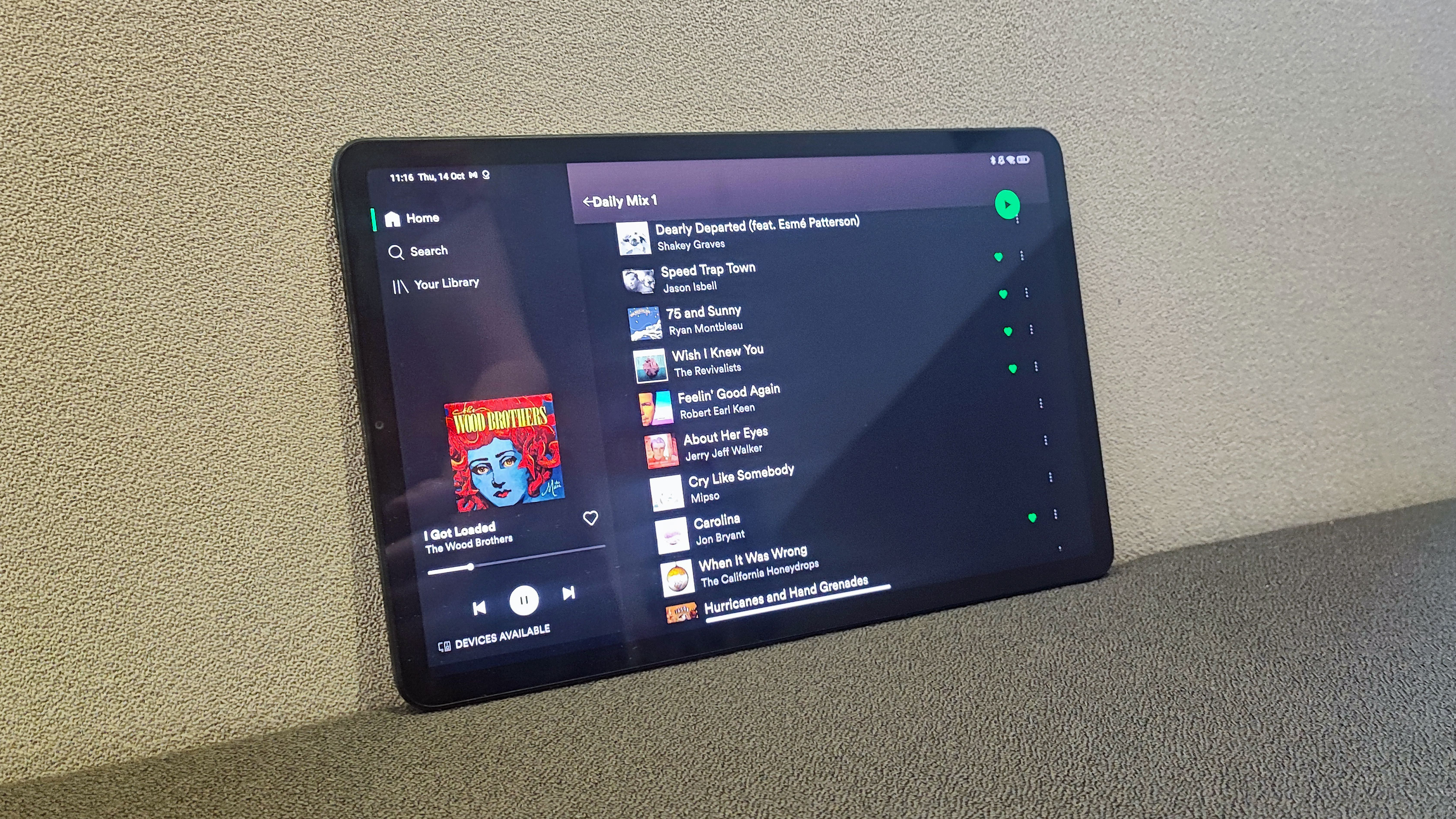
The Xiaomi Pad 5’s quad speakers were fit for purpose for music streaming and watching movies, but they lacked bassy punch, so they weren’t the best speakers we’ve heard on a tablet. Saying that, the volume went impressively loud - that’s great for using the slate as a portable speaker, but your neighbors might not be thrilled.
The 8MP front-facing and 13MP rear cameras are both… well, this is a tablet, so you shouldn’t come in expecting smartphone-level imaging. Saying that, there’s clearly some of Xiaomi’s image post-processing at play: snaps looked fairly bright, with colors that looked bold for tablet photography, though some selfies could look overexposed.
Software
The ace up Xiaomi’s sleeve in making its Pad 5 a useful work device is MIUI for Pad, the software it uses. This is a fork of MIUI, the software used in Xiaomi phones, which in itself is a fork of Google’s Android.
While stock Android isn’t quite a perfect match for a tablet’s large form factor, MIUI for Pad brings lots of tweaks and changes to the formula to make it far more useful on the Pad 5’s 11-inch screen.
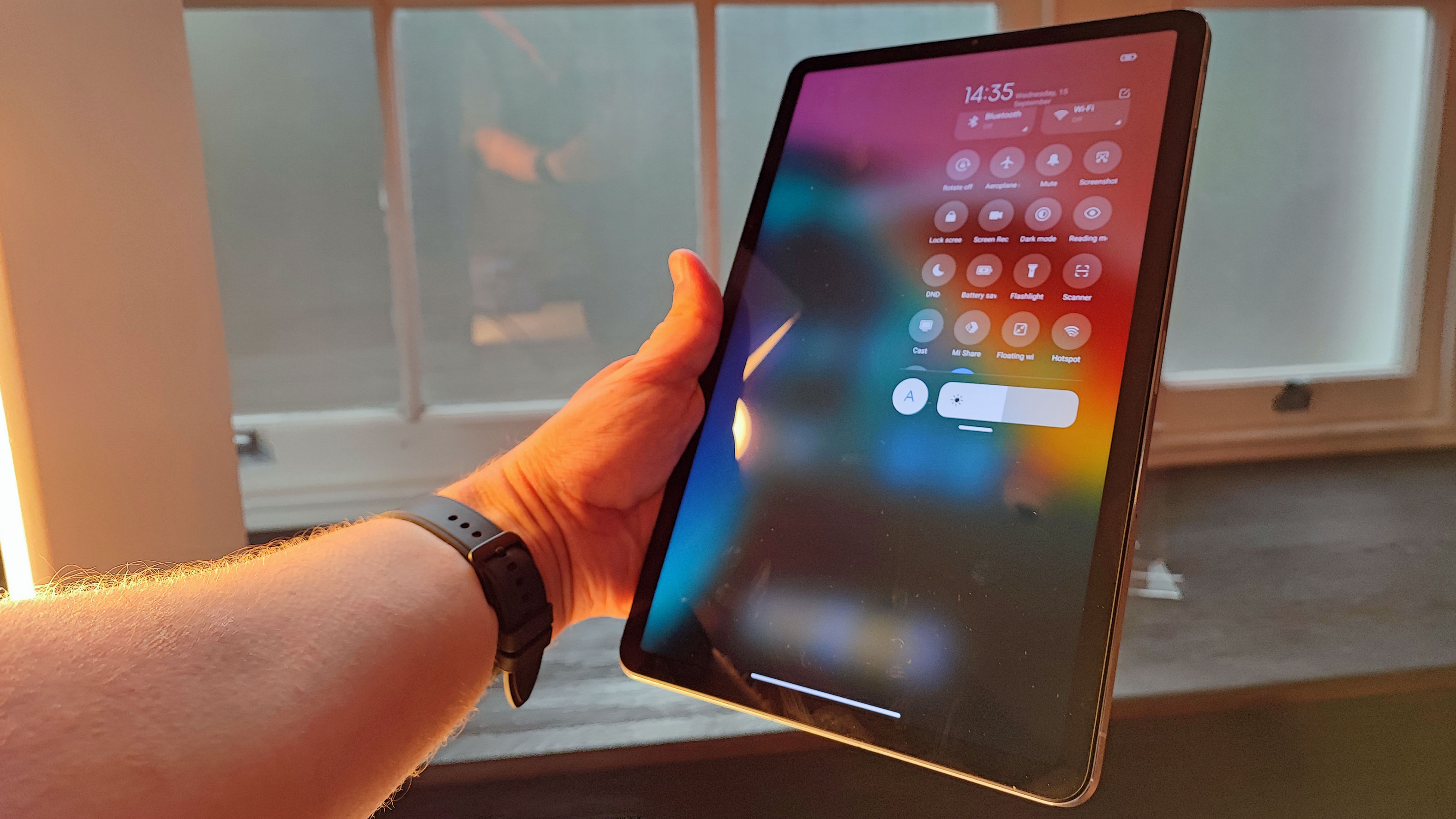
Like iPadOS, MIUI keeps notifications separate from shortcuts and quick toggles, so if you swipe down from the left side of the screen you’ll see your notifications, but if you swipe down on the right half you’ll get options like Bluetooth and Wi-Fi settings.
There are other changes - it’s easy to open multiple apps at once, whether that’s as two apps side-by-side or as one app in a bubble appearing over another. In addition, the user interface has been redesigned to look better on a larger screen, and Xiaomi is reportedly optimizing top apps to work well on the bigger screen.
MIUI is often quite buggy on phones, but we’re happy to report that we didn’t have a single issue on the Pad 5. Sure, you use a smartphone a lot more frequently than a tablet, so it’s possible we just didn’t have the exposure required to notice this kind of issue, but it still felt like a smooth experience.
The well-optimized software is the top reason we’d call the Xiaomi Pad 5 the best iPad rival running Android, but for creative types there is something to consider before you leap at this slate. Being the best sometimes isn’t good enough, and iOS still has the benefit of lots of useful creative apps you won’t find on Android like Lumafusion, Final Draft Mobile or Affinity Photo.
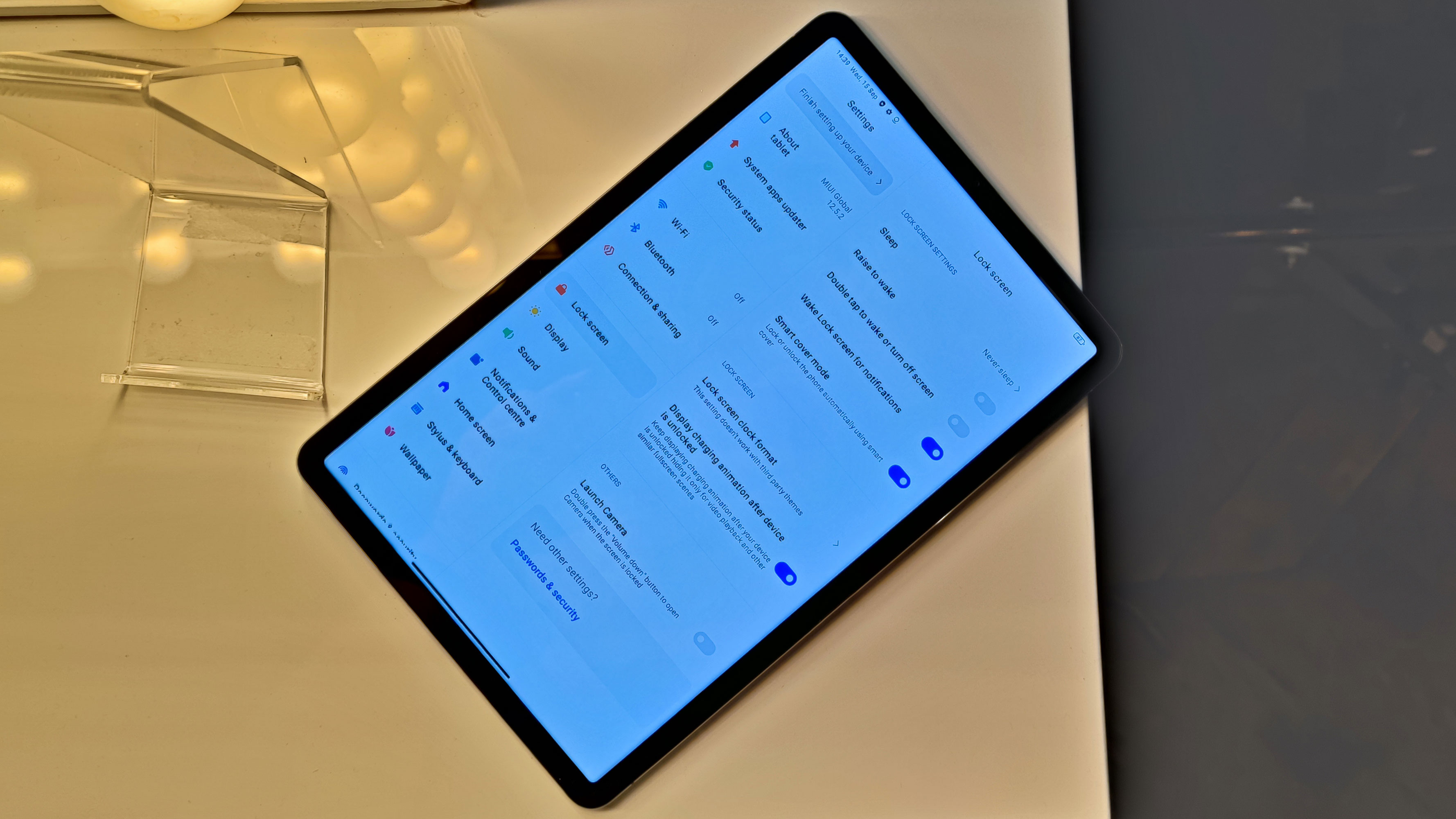
Still, app supply is the key reason we recommend the Xiaomi Pad 5 over the Huawei MatePad 11 - both have similar specs and designs, but with the latter unable to access the Google Play Store (and thus relying on other, less reliable methods for installing apps), the Xiaomi gets points for ease of use.
Battery life
The 8,720mAh battery in the Xiaomi Pad 5 sounds rather average for a slate of its size, but during our time with the device we learnt to appreciate the actual lasting power of this tablet.
Xiaomi estimates you’ll get 5 days of music playback, 16 hours of video playback or 10 hours of gaming time on the slate; from our experience, these are actually underestimations, and while playing titles like Tropico or Northgard, or streaming audio or movies, we found the slate could last a little longer.
Those estimates are already a little north of Apple’s equivalents for its iPad, and we found ourselves consistently impressed by the battery power of the device. This battery will make it great for a student who needs to carry it round to loads of different lectures in a day, then settle in for a movie in bed after.
Charging is also fairly impressive, at 33W - that’s fast for a tablet, though Xiaomi’s phones go at up to 120W. At that speed, the slate takes about an hour and a half to power to full - though it’s worth pointing out that the in-box cable only supports 22.5W charging, so if you want faster speeds than that, you’ll need to use a different lead.
Should I buy the Xiaomi Pad 5?
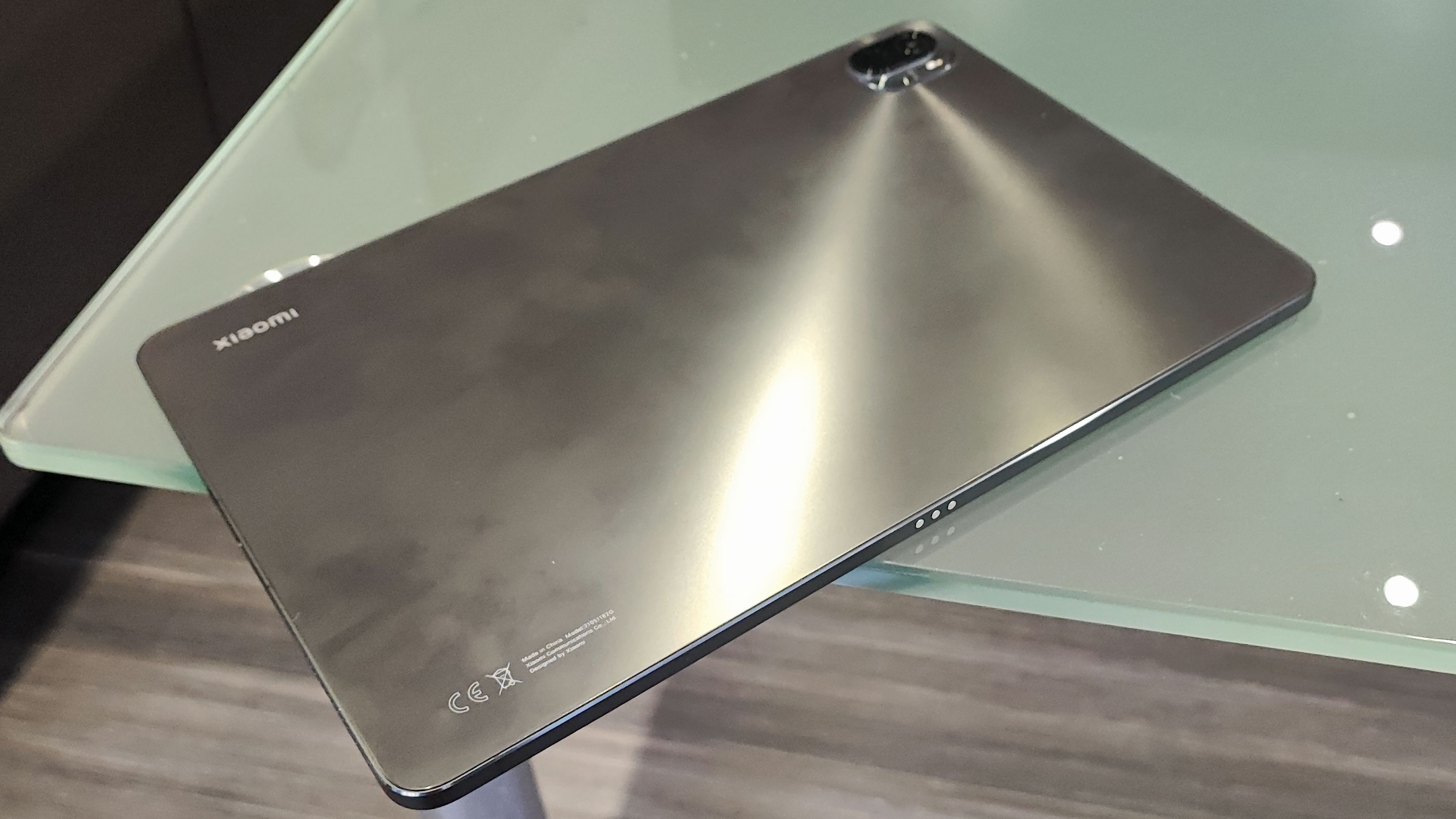
Buy it if...
You need a great Android tablet
Xiaomi has successfully adapted the Android operating system to the larger tablet form factor, and MIUI for Pad feels more intuitive than lots of other Android forks for slates.
You need a long-lasting workhorse
We were impressed with the Xiaomi Pad 5’s battery life, and it feels well-suited for a hard day’s work if you’re a student or similar.
You need a decent camera
Most tablets have pretty awful cameras that look desaturated, dark or dull, but we didn’t mind how the Xiaomi Pad 5’s front or back snappers looked. Sure, it won’t compete with your average smartphone, but these are better than most tablet cameras.
Don't buy it if...
It maxes out your budget
If you have the cash for the Xiaomi Pad 5 but no more, you might want to opt for a cheaper device simply so you can buy some peripherals for it too.
You need a lightweight model
Despite its slender build, the Xiaomi Pad 5 is one of the heavier tablets we’ve used - if you need something super lightweight there are better options like the iPad mini (2021).
You need a headphone jack
Some people might want to plug headphones and a charger, hard drive, or other wired accessory into their tablet at the same time, particularly creatives - this will be hard if you don’t have one or more splitters, and there are a few tablets on the market that still have 3.5mm headphone jacks.
First reviewed October 2021

Tom Bedford joined TechRadar in early 2019 as a staff writer, and left the team as deputy phones editor in late 2022 to work for entertainment site (and TR sister-site) What To Watch. He continues to contribute on a freelance basis for several sections including phones, audio and fitness.
